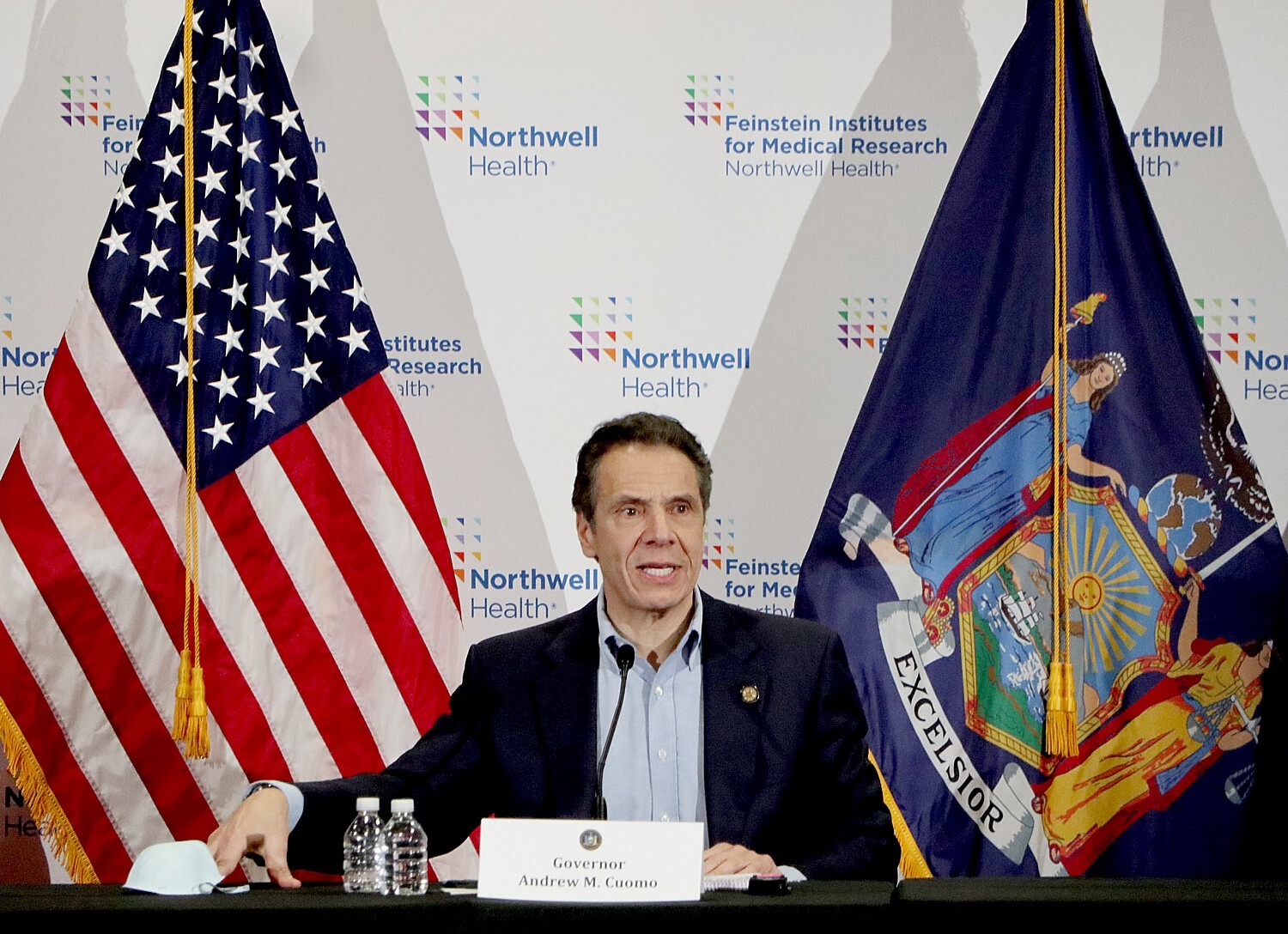Gov. Andrew Cuomo announced a phased plan to reopen the state’s economy as early as May 15, but Nassau County and its neighboring regions may have to wait longer due to various health indicators.
The plan will most likely begin throughout upstate New York, since the outbreak downstate, which includes Nassau and Suffolk Counties, New York City, and Westchester, poses the most “complicated situation,” Cuomo said.
“Multi-state coordination is vital there because the New Jersey, Connecticut, New York City area is basically very intermixed,” Cuomo said. “People are coming and going, they live in one place, they work in the other place. That coordination is important.”
Before implementing the plan, the Centers for Disease Control and Prevention requires the state and regional hospitalization rates to be in decline for 14 days, according to Cuomo.
Nassau County Executive Laura Curran said Tuesday that the county is nearing that mark and noted hospitalizations throughout Nassau have declined for the past 13 days.
“That means we are one more day away from declining hospitalizations to check that very important box for CDC of protocols for phase one of reopening,” Curran said.
While the federal government defers judgment to state governors, Cuomo believes the Centers for Disease Control and Prevention were correct in their guidelines.
“I think the CDC guidance is right,” Cuomo said. “So we’re monitoring the hospitalization rate. We’re monitoring the regional hospitalization rates. We said in this state, it’s a very diverse state.”
The first phase of the plan, according to Cuomo, will include opening construction and manufacturing functions with low risk, so long as the health trends continue to comply with medical guidelines.
Phase two, he said, is a more in-depth look at each business on a case-by-case analysis, and finding the best ways for them to reopen. He said officials will determine a business’ essential service to the community, the risks of reopening, and the importance of its reopening.
“In phase two, when we get there, we need businesses to do that analysis,” Cuomo said. “They have to think about how they’re going to reopen with this ‘new normal.’”
Cuomo said business owners must analyze the precautions and safeguards that will need to be potentially addressed for each individual business.
Two weeks must pass before the next part of the plan is implemented, Cuomo said, in order to effectively monitor its impact. He said two weeks cover the incubation period of the virus.
Though the decrease in hospitalizations bodes well for the county, other figures show that Nassau and other downstate regions will not initiate the reopening plan.
Nassau’s Deputy County Executive for Economic Development Evlyn Tsimis said a total of 88,768 county residents had been tested for the coronavirus as of Tuesday. Of that number, 35,085 had tested positive, including 1,647 who have suffered coronavirus-related deaths.
“The second box that we’ve got to check is making sure that we have a downward trajectory of the number of people who are testing positive,” Curran said. “Third box to check [will be] ramped-up testing.”
On Tuesday, Cuomo went more into detail of what needs to be done to properly incorporate the plan beginning with securing health care capacity throughout the state.
Each region must have at least 30 percent of hospital beds and intensive care units available after elective surgeries resume. Regions must also have a plan for isolation facilities, which are rooms for those who test positive for the virus and cannot self-isolate.
Regions must also implement testing procedures that prioritize those who are symptomatic or came into contact with someone who had tested positive for the virus, Cuomo said. Regions must also utilize collected data to track and trace the spread of the virus.
Tracing is one of the key parts of the plan to reopen the state safely and efficiently, he said. Each region must have 30 contact traces for every 100,000 people.
Former New York City Mayor Michael Bloomberg joined Cuomo last Wednesday and said Bloomberg Philanthropies had committed $10.5 million in technical and organizational support to execute tracing throughout the state.
The tracing program, according to officials, will be a vital resource to monitor best practices and used as a model for immediate neighboring states such as New Jersey and Connecticut, and potentially, throughout the nation.
“We’re all eager to begin loosening restrictions on our daily lives and our economy,” Bloomberg said. “But in order to do that as safely as possible, we first have to put in place systems to identify people who may have been exposed to the virus and support them as they isolate.”
Cuomo said coordinating testing and tracing throughout the state’s regions will aid in determining when schools and transportation systems can safely reopen. The governor stressed the importance of remaining “smart” when the state does ultimately begin to reopen.
“We can’t now negate everything that we accomplished,” Cuomo said. “We have to do the opposite. We have to take this experience and we have to learn and grow from the experience.”
Curran was appointed to the governor’s Reimagine New York Task Force, a group of state leaders dedicated to reimagining and improving state policies and enhance how businesses and transportation function.
“I will work with our business, community, and education leaders, and we will recalibrate, we will recover, and Nassau County will emerge stronger than ever,” Curran said.



